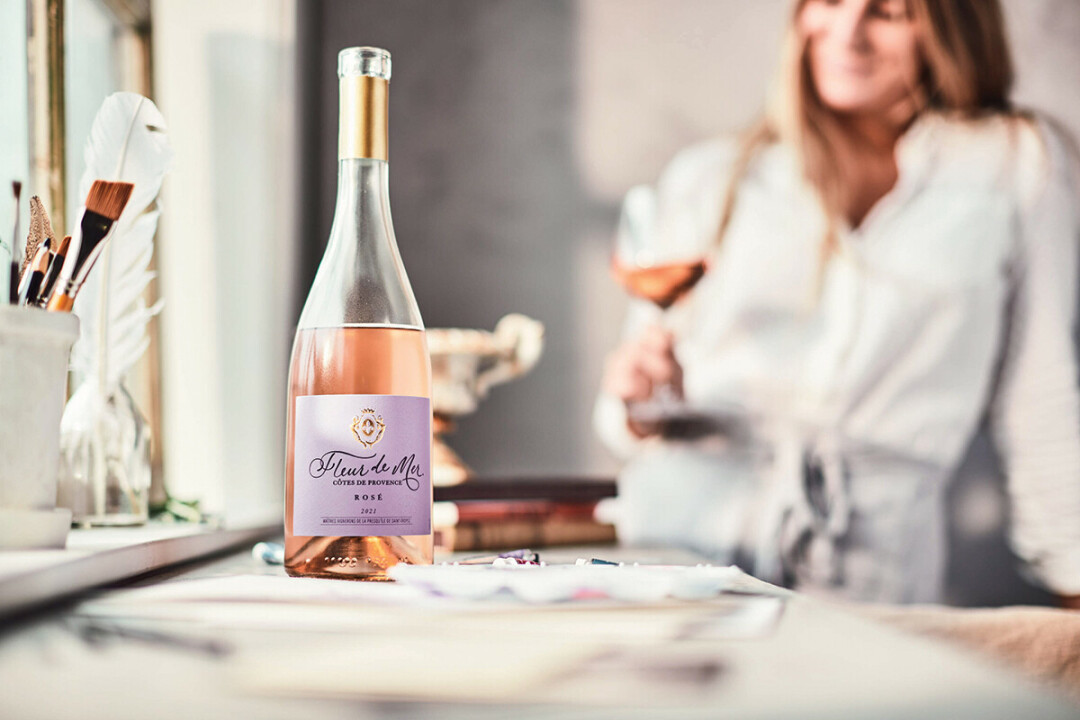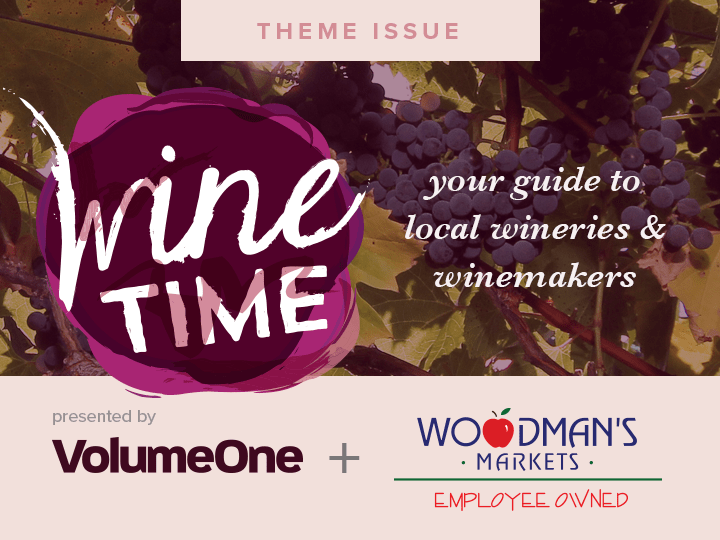WINE TIME: The Right Day for Rosé
between red and white, rosé wines offer a range of flavors and pair well with food

With rosé season upon us and National Rosé Day right around the corner on June 11, I thought it would be a wonderful time to recommend a few favorites. But first, let’s learn a little about rosés.
Rosés are thought to be some of the oldest known wines and today are produced in every wine region around the globe. It is very likely that many of the earliest red wines made were close in appearance to today’s rosés. Usually, the wine is labelled “rosé” in French, Portuguese, and English-speaking countries, “rosado” in Spanish, or “rosato” in Italian.
There are three main ways to produce rosés, skin contact, saignée, and blending. Skin contact is the most common method: With this technique, after the red grapes are crushed the winemaker allows the juice to rest on the skins from a few hours to a couple of days depending on how much flavor or color is desired. The saignée (or bleeding) method is typically used when a winemaker wants to intensify a red wine. After crushing the grapes, a portion of the pink juice is bled off, leaving a higher skin-to-juice ratio for the red wine which leads to higher tannins and bolder flavors. The juice that was removed is then fermented into a rosé. The third method of blending red wine into white wine to impart a rosé color is uncommon and is discouraged in most wine-growing regions, especially in France, where it is forbidden by law, except for Champagne. Even in Champagne, several high-end producers do not use this method but rather the saignée method.
Rosés can vary from deep salmon-colored, dry, and full-flavored wines where all the sugar is fermented into alcohol to pink and sweeter styles which contain a percentage of residual sugar. In America, these sweeter wines are often called “blush wines.”
Rosés can vary from deep salmon-colored, dry, and full-flavored wines where all the sugar is fermented into alcohol to pink and sweeter styles which contain a percentage of residual sugar. In America, these sweeter wines are often called “blush wines.” It is because of blush wines that a lot of people have not been fortunate enough to enjoy a good rosé. While facilitating a wine event such as a tasting or a dinner when offering up rosé, it is almost inevitable that someone will say, “No thank you, I don’t like sweet wines.” To which the standard response is, “Rosés are not sweet. Blush wines are sweet.” Good rosés are dry and full of flavor and make an excellent choice for meal pairing because they are versatile and super food-friendly. On a hot, humid summer evening when the steaks are on the grill you may not feel like a heavy red. Rosés are the perfect answer, dry enough and flavorful enough to match that juicy steak and yet a nice easy-drinking wine to tame down the sweltering heat.
Let’s talk about a few rosés worth trying. Starting out, we should visit what is considered the most famous rosé-producing region in the world, the Mediterranean coastal region of Côtes de Provence in France. A personal favorite is Fleur de Mer. Throughout the rolling hills and valleys of Provence, fields of lavender thrive in the warm sun and fresh, crisp seaside air. In French, Fleur de Mer means “Flower of the Sea.” Winemaker Florian Lacroux selected Cinsault, Grenache, and Mourvédre grape varieties to form the core of the blend. The long, sunny Mediterranean summer allows the fruit ample time to develop the bright, expressive flavors, intense aromatics, and signature structure of a Provençal Rosé. This wine opens with generous aromas of white peach, citrus, wildflowers, and herbs. A classic Provençal style, ripe raspberry, wild strawberry, and crushed watermelon notes are complemented by layers of minerality before a refreshingly crisp finish. Try this wine with tomato-based pasta dishes, salads, any seafood, pizza, ribs and yes, steaks.
Next up, let’s travel to California. From the Indelicato family, making California wine since 1924, we have Noble Vines 515 Rosé. From the San Bernabe vineyard in Monterey this 13.5% ABV wine is definitely not sweet. It’s made in a traditional, dry style that prizes bright acidity, mouth-filling texture, and freshness. Aromas of melon, strawberry, and roses follow through to the palate and complement a round, medium-bodied mouth feel. The elegant structure of graceful acidity and light tannins contribute to a long, fresh, clean finish. This wine can be enjoyed on its own, or the versatility of Rosé pairs well with a variety of different dishes.
Perhaps you enjoy the sweeter blush style wines. For that let’s look to something local from Wisconsin’s most famous and nationally awarded winery, Wollersheim. They produce a delicate wine called Blushing Rose. Coming in at a low 10.5% ABV this luscious, semi-sweet blush has a beautiful soft pink color and juicy fruits reminiscent of strawberry and kiwi. Perfect to be enjoyed on its own or paired with award-winning Wisconsin cheeses or light appetizers.
With so many styles of rosé to choose from, dry or sweet and still or sparkling, there is definitely something for everyone. So, if you haven’t joined the rosé movement yet, what are you waiting for? Grab a bottle and find out what you’ve been missing. Cheers!
Learn more about William Bernier’s wine tastings and wine dinners at facebook.com/EauClaireWineGuy.


